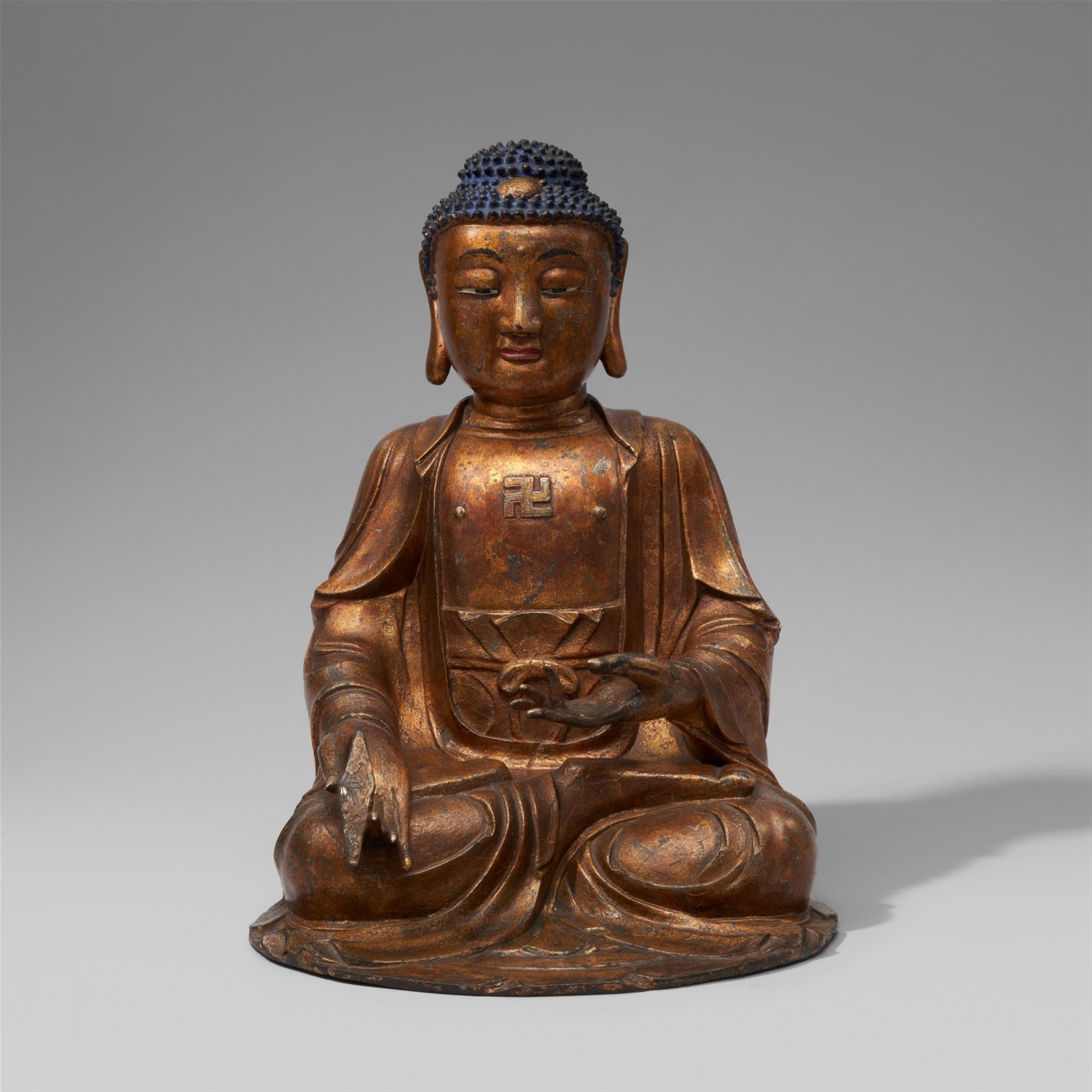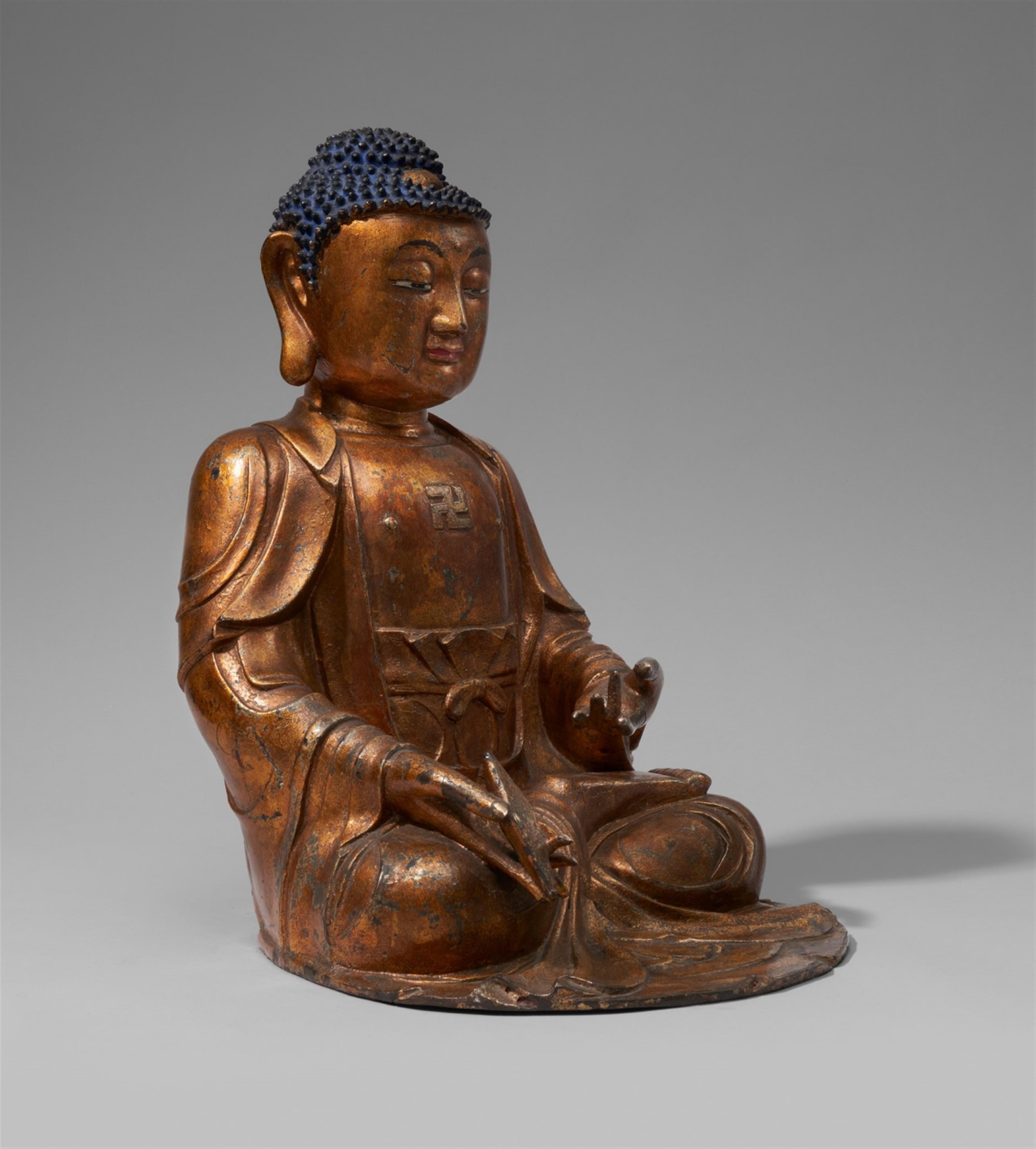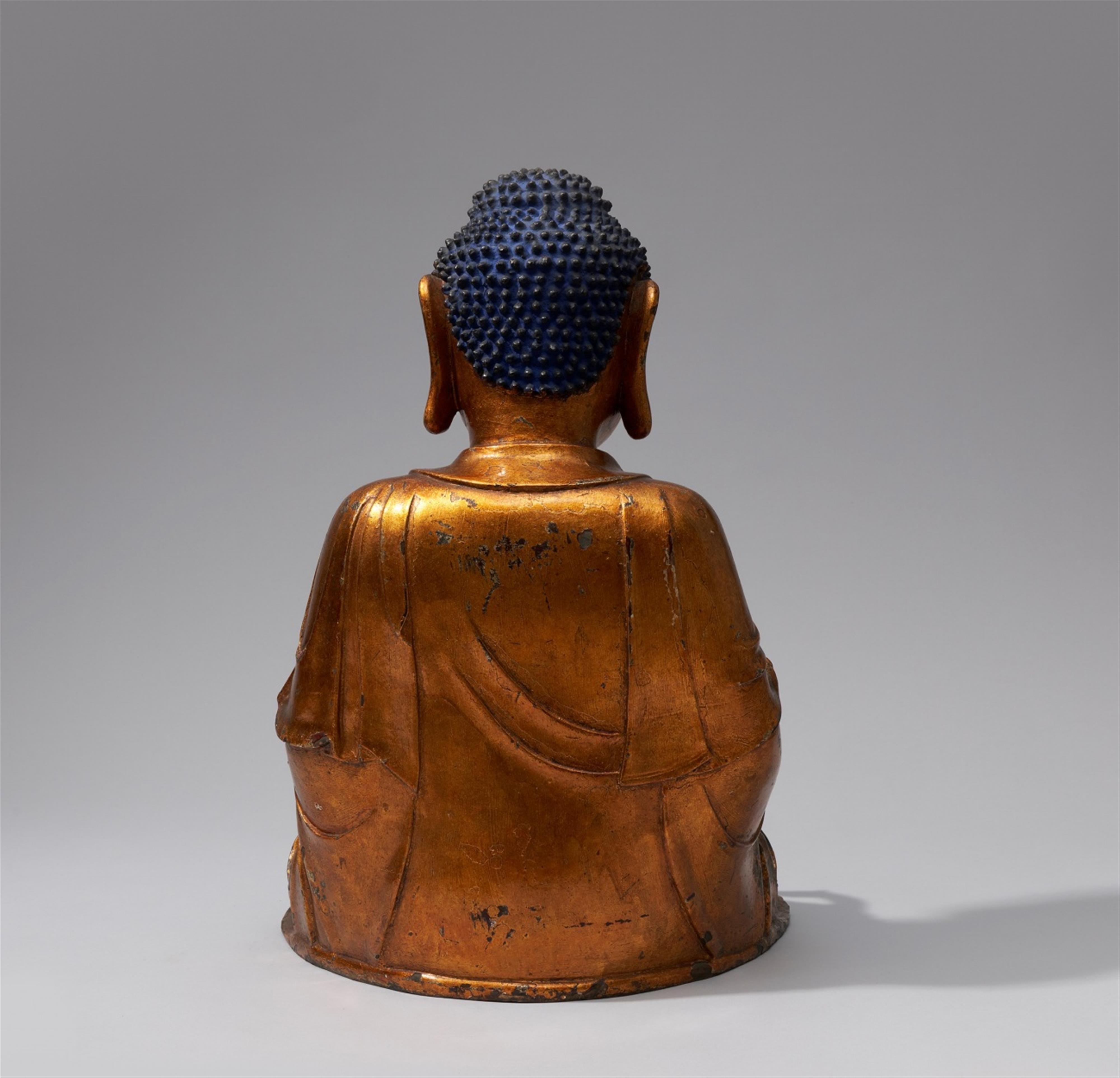A lacquered bronze figure of Bhaishajyaguru, the Medicine Buddha. 17th/18th century
Seated in meditation (padmasana), the right hand with a myrobalan fruit placed on the knee, the left hand held forward. The robes open to reveal the chest with a swastika in relief and tiny nipples, the antaravasaka (chin. neiyi) is held together at the waist with a belt tied into a bow, while the uttarasanga (chin. shangzhuoyi) and kasaya cover the rest of the body, only the hem of the undergarment is engraved with blossoms and scrolls. The robe flares out fan-like in front, forming a flat base for the seated figure.The full face is accentuated by painted brows, eyes and red lips, a large urna is reserved from the hair curls painted blue and covering the ushnisha.
Height 50.2 cm
On the basis of the myrobalan fruit, the simple garment covering both shoulders and the complete lack of jewellery, this figure can be identified as the Buddha of Medicine, chin. Yaoshi fo. He is also called the Healing Buddha, and is said to dispense spiritual medicine when properly worshipped. It is even believed tat an efficacious cure may be accomplished by merely touching the image.
The figure is represented in the pure Han-Chinese style, without any iconographic or stylistic influence of the Tantric or Tibetan Buddhism prevalent at the imperial court. Such sculptures were generally donated to a Buddhist temple by private persons. They were placed on the large wooden altar, which displayed the main figures of worship, usually a triad of Buddhas or Bodhisattvas. To the sides and in front of them smaller Buddhist figures were randomly arranged. As objects of worship they were sometimes donned with a cloth placed around their shoulders.
十七/十八世紀 銅鎏金药师佛坐像
結跏趺坐,身著身穿袒右式袈裟,
左手於臍前結禪定印,右手於右膝前結觸地印,
袈裟僅在衣領、袖口、下擺處表現衣紋
來源:德國法蘭克福]私人收藏
可比:伦佩滋拍卖,2020年12月1516日,拍品編號109
他長袍蔽肩,身無他飾,面容平靜。
一手持金刚杵,一手置于膝上结胜施印。
這類雕像通常是私人捐贈給佛寺的。他們被放置在巨大的木壇上,
木壇上是最重要的佛教人物,通常是三個佛陀或菩薩。
药师佛又称为大医王佛,据《药师经》说,他曾发十二大愿,为众生医治病苦,消灾延寿,所以在佛教寺院的医学殿内也常供奉此像。
Provenance
Private property, since the 1950s, Frankfurt
Literature
Compare a similar figure sold in these rooms 15./16.12.2020, lot 109






